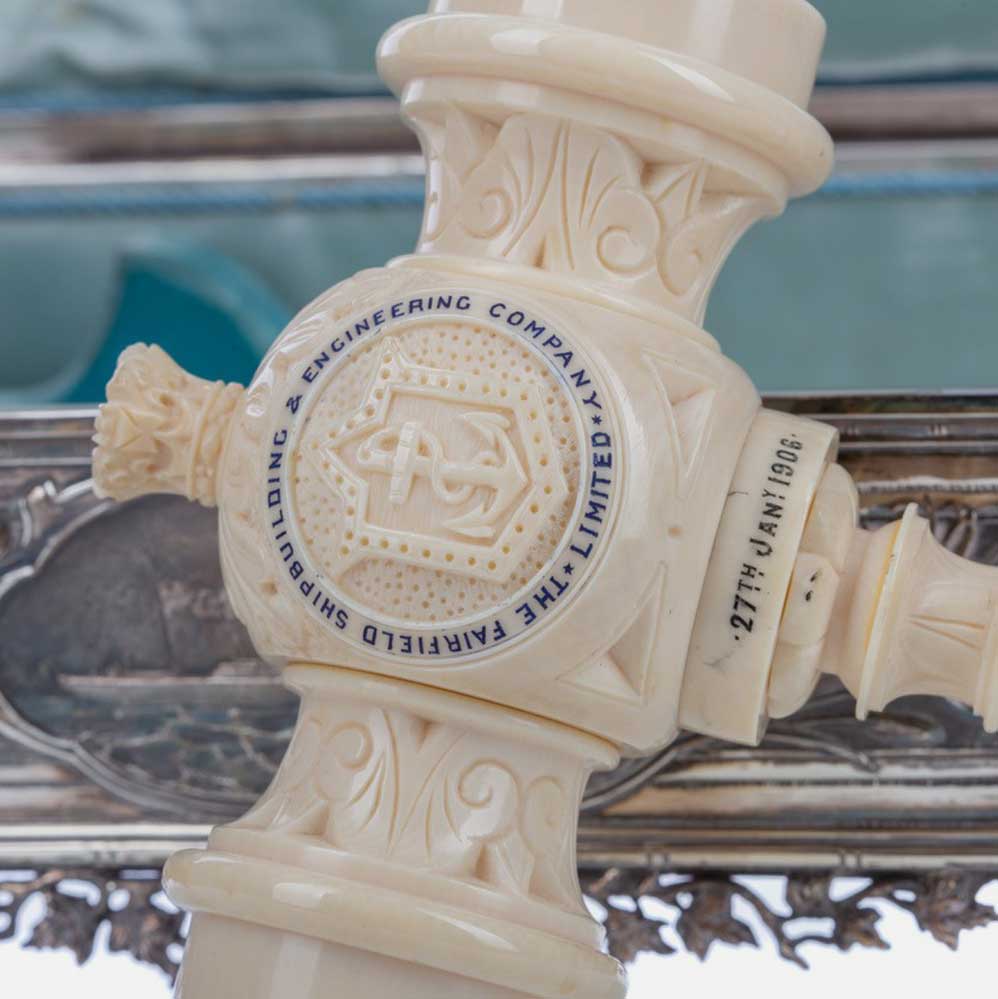

The ship was the second of a pair of ocean liners commissioned by Canadian Pacific Steamships for the purpose of trans-Atlantic passenger travel. They were constructed by the world renown Fairfield Shipbuilding and Engineering Company in the Govan Shipyards on Glasgow’s River Clyde.
The Empress was officially launched on the 27th January 1906, going on to transport vast numbers of people between the UK and Canada. Indeed, by the time of her last successful voyage from Liverpool to Quebec on the 22nd May 1914, she had transported 119,262 passengers westbound to Canada, and a further 67,838 eastbound to Britain. This would include a good many migrants from both Britain and Ireland, the ship making strategic port calls during each voyage.
At 4:30PM on the 28th May 1914, the liner left Quebec for what would prove to be the last time. A total of 1,477 were onboard, comprising 420 crew members and 1,057 passengers. It was a frosty night, but otherwise conditions were said to be perfect for the experienced captain, John Kendall. Over six hours later, upon leaving Point-au-Père, the Empress would encounter the Norwegian collier S.S. Storstad. Conditions remained fair, though a blanket of fog would soon envelop the ships, the crews then resorting to use of their fog whistles to maintain distance.
There is still a degree of uncertainty as to what exactly happened next, though, around 1:55AM the Storstad crashed into the Empress at midship. Whilst the collier remained afloat, the liner was critically damaged, a gaping hole now present on her starboard side. Before the hundreds below deck even had a chance to comprehend the situation, around 60,000 gallons of water began gushing in, causing the ship to sink in under 15 minutes.
The crash came only two years after the infamous Titanic disaster, with that earlier tragedy having led to more stringent safety precautions, including the fitting of additional lifeboats. This would count for very little however, when the sheer force of the Storstad’s impact, coupled with the weight of the water flooding in, resulted in the Empress rolling onto her side. The lifeboats were therefore inaccessible to the hundreds of passengers, most of whom had been asleep in their cabins. In total, 437 men, 267 women, 134 children and 172 crew members lost their lives.
Shortly after, the Canadian and Norwegian governments launched their own investigations into the circumstances surrounding the crash. Both captains denied culpability and opposing verdicts were delivered, each nation finding the other at fault. Before any further action could be taken, the outbreak of World War I drew attention away from the Empress, and, in only a matter of months, one of the worst maritime disasters in recorded history had become largely forgotten.
The launching mallet and casket offered are noteworthy objects relating to the liner. Sumptuously decorated and inscribed with the launch date of the 27th January 1906, they were made to commemorate the completion and inaugural journey of the ship. The importance and high regard within which she was held is quite clearly illustrated, ivory and sterling silver combining to convey a sense of ceremonial grandeur.
Both pieces are embellished with the crest and monogram of the Fairfield Shipbuilding Company, who are seen here to be proudly and quite rightly boasting their accomplishment. The size of the casket naturally allows for greater decoration, and, perhaps its most noteworthy features are the Royal Coat of Arms of the UK, seen here as the finial, and the Canadian Parliament building, found on a panel to the reverse. Both stand as important symbols of their respective nations’ sovereignty and here make firm declarations as to their continued bond, one cemented by the launch of the Empress.
A presentation inscription can be seen upon the cover, noting the objects as a gift ‘…to Mrs. Alexander Gracie BY THE CHAIRMAN AND DIRECTORS OF THE FAIRFIELD SHIPBUILDING AND ENGINEERING CO. LTD. ON THE OCCASION OF THE LAUNCH…’. Gracie herself was the wife of one Sir Alexander Gracie, K.B.E. M.V.O. (1860-1930), an important figure in the history Scottish shipbuilding and (at that time) member of the Fairfield board of directors. The jubilation with which these people greeted the launch is epitomised in these ceremonial objects, a feeling we now view in stark contrast with the events of eight years later, when over a thousand people would lose their lives onboard the ship.
The mallet and casket should therefore be seen as tangible links to the Empress of Ireland’s monumental birth, pivotal voyages and doomed final journey. She was proudly celebrated when launched, a vital connection between the UK and Canada that came to play a critical role in transporting nearly 200,000 people between the two nations. Her demise will live on as one of Canada’s greatest tragedies, with the death toll and manner of sinking leading many to class her as the nation’s very own Titanic.
The bed of the St. Lawrence River is to this day her resting place. Several memorials have since been erected to commemorate those who lost their lives, with objects recovered from the wreckage now on display in many of the nation’s museums. Indeed, whilst in 1914 the event soon faded from the public’s conscience, one hundred years later in 2014, the Canadian Government acted more decisively in commemorating the tragedy, doing so with numerous events, as well as the issue and minting of a stamp and coin.
Whilst the tragedy of those who died should not escape us, the opportunity for new life born out of the Empress’ multiple voyages must also be remembered. Indeed, the launch mallet and casket stand as powerful symbols of just that, disaster and hope, the duality of human existence.
Find out what your items are worth by completing our short valuation form - it's free!